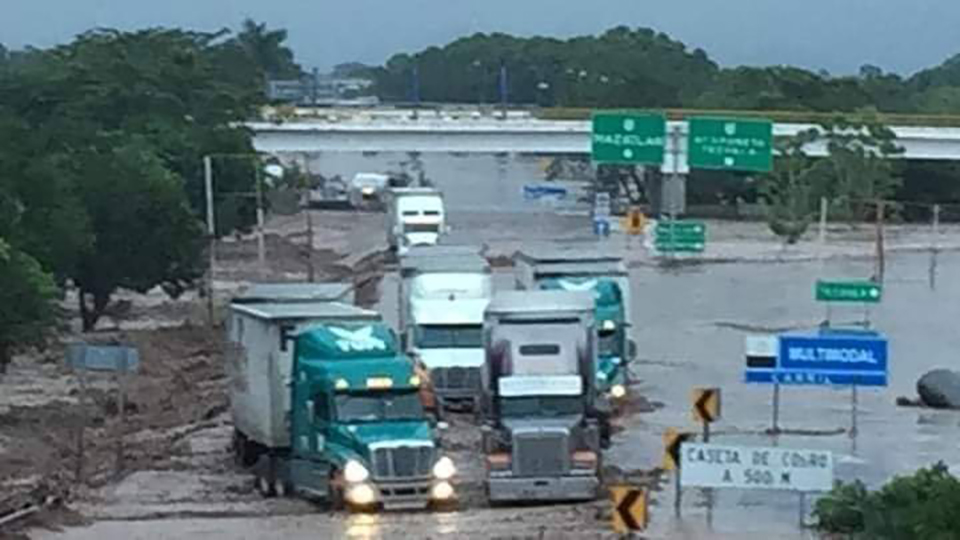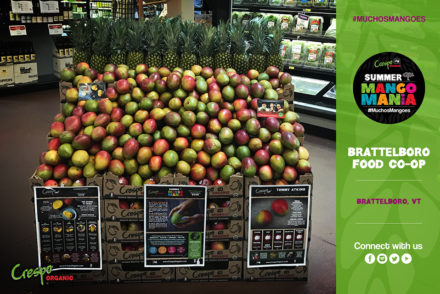Much needed water pours down on the mangoes despite the ensuing chaos
The hurricane, which gained massive, unforeseen, rapid strength, morphing into a Category 5 storm, with wind gusts exceeding 160 mph, was projected to be one of the most powerful storms to hit the Mexican Pacific coast. Eventually, just before making landfall, the storm weakened- slightly- into a (still extremely dangerous) Category 4 storm, and upon landfall a powerful Category 3 hurricane, arriving near the Isla De Bosque, Sinaloa, Mexico which is about an hour and half south of Mazatlán and about 45 minutes south west of El Rosario, where Crespo Organic’s main Mexican offices and our main pack house Empaque don Jorge, live.
In essence the hurricane/storm hit directly into our community.
El Rosario, lies at the foot of the Sierra Madres and this majestic mountain range is what helps break up hurricanes that land here, quickly. As the storm hit on Tuesday directly in an area filled with estuaries, lagoons and mangroves winds were recorded at 120 mph. More than 4,000 evacuees were reportedly moved from all over the nearby coast. Despite the hurricane being downgraded into a tropical storm- once the outlying edges hit the mountains, dangerous storm surge and rainfall became the main elements of danger, and still are. The rains continue to drop, so far the area has registered significant rainfall over the last three days. Residents continue to watch closely for life-threatening flash flooding and landslides that will continue to threaten the area as the rain endures.
The local rivers are full and many flooding or on the verge of flooding over and into nearby villages and towns. The Baluarte River, which flows through El Rosario, is a tributary that comes across the Sierra de Durango and travels a total of 142 kilometers, is at brink of overflow and putting at least 10 communities in direct danger. The entire area is still under a state of emergency because of the risk factors with flooding and landslides.
Before……
After….
In terms of how Crespo and Empaque Don Jorge faired, there was wind damage and a lot of things knocked around but over all things are in place. Our mangoes orchards are in good shape. The problem lies in our workers, their families and our neighboring communities who are still moving through these massive rains. It will be days before the true problems come to light. The rains are still so heavy and rivers and waterways all full, many overflowing that the damages to many communities will be heavy.
In terms of the agricultural assessments, most of the mangoes in the area are ok. They are in their off season and at a stage when the top parts of the trees, typically effected by wind aren’t bothered. Most important is the water needed in the ground for the season to come. Rains have continued to be scarce and at the wrong times over the past year in Sinaloa and so the water that is coming down is “good for the trees”. Again, it’s too early to tell of the massive amount of water will fill the water tables or just pass by too quickly to absorb.
About 20-25 miles south of El Rosario, where the direct line of the hurricane entered inland, other growers of mangoes and other crops didn’t fare so well. The heavy winds, whipped through the trees, pulling off branches and taking down trees. Assessments are still being made to total damages but this area where the heart of the storm came in, was heavily damaged.
Other agriculture in the area, tomatoes and chili peppers, all over the area didn’t fare well at all. Most vegetable crops are just tattered, ripped up out of the ground and laying around. The crops grown in this area are mostly uncovered so they are highly susceptible to heavy winds and rain.
Also, it’s important to note that roads are mess and will continue to be for a while. The area will be burdened with clean up and costs associated with these delays for a long time to come.
I will put out another update once the rains move out and river surges quell.
















No Comments